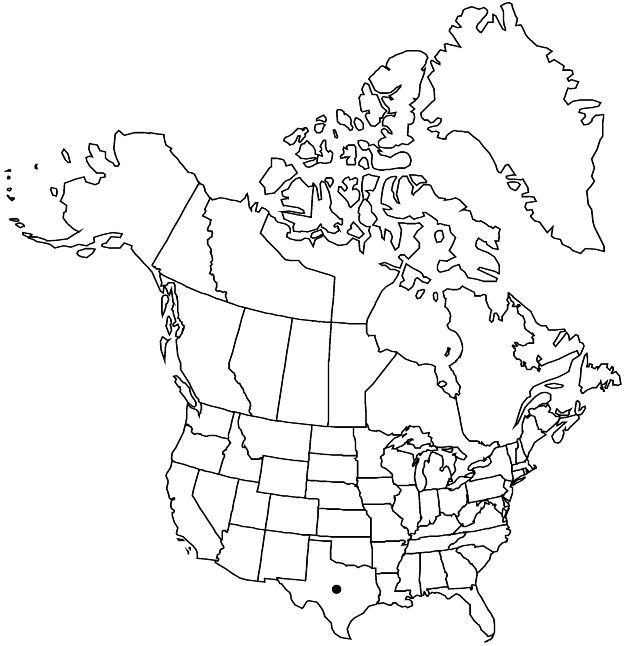Kallstroemia perennans
Field & Lab. 18: 155. 1950.
Herbs, perennial. Stems prostrate to ascending, to 0.2 m, densely hispid with white or yellow bulbous-based hairs and strigose with white antrorse hairs. Leaves elliptic in outline, 2.5–5 × 2–3 cm; stipules 3–5 × 1–1.5 mm; leaflets 8–10, oblong to ovate, 13–18 × 6–10 mm, middle pairs largest, surfaces densely appressed-hirsute, veins and margins sericeous. Pedicels 15–20 mm in flower, 25–36 mm in fruit, shorter than subtending leaves, little thickened distally, bent sharply at base and straight distally. Flowers 35–45 mm diam.; sepals persistent, lanceolate, 13–15 × 1.5–2.5 mm, 1/2 as long as petals, in flower longer than style, in fruit spreading from base of mature mericarps and longer than fruit body but shorter than beak, margins becoming sharply involute, densely hispid and strigose; petals not marcescent, 1-colored, usually orange, sometimes pale orange to almost salmon-colored, obovate, 19–26 × 10 mm; stamens 2/3 as long as style; anthers orange, ovoid, 1.5 mm; ovary ovoid, 3 mm diam., hairy; style cylindric, 6 mm, 2 times as long as ovary, hispid; stigma extending along distal 1/3 of style. Schizocarps broadly ovoid, 5–6 × 8–10 mm, hispid and strigose; beak cylindric, 6–10 mm, longer than fruit body, base slightly conic, hirsute; mericarps 4 × 2.5 mm, abaxially crossridged, ± keeled, sides pitted, adaxial edge straight.
Phenology: Flowering May–Aug, following spring and summer rains.
Habitat: Somewhat barren limestone or gypseous soils.
Elevation: 400–900 m.
Discussion
Kallstroemia perennans is a rare western Texas endemic, found only in Val Verde County on the Edwards Plateau and in Brewster and Presidio counties in the trans-Pecos. The species is in the Center for Plant Conservation's National Collection of Endangered Plants.
Selected References
None.
Lower Taxa
"timesaslongasovary" is not declared as a valid unit of measurement for this property.
